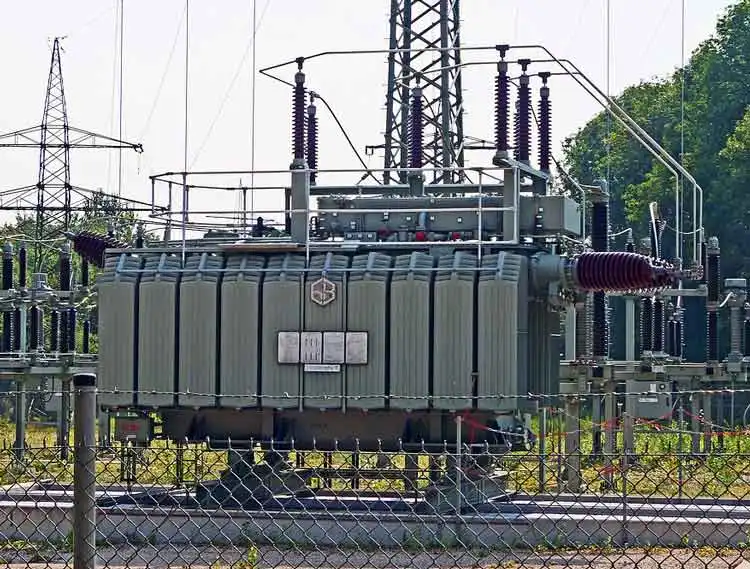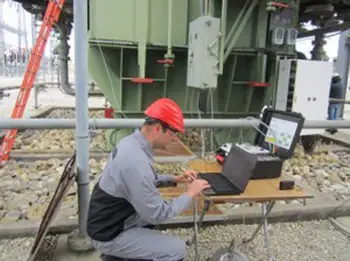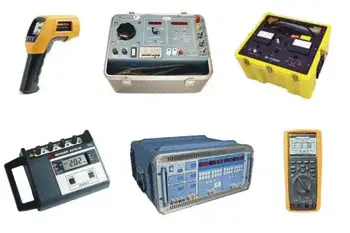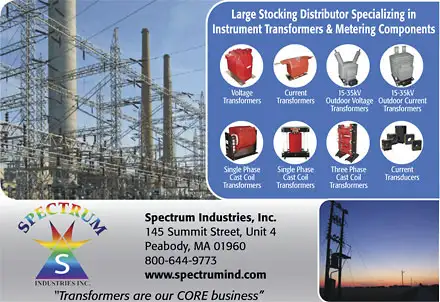Electrical Substation Transformer Explained
By R.W. Hurst, Editor

Substation Maintenance Training
Our customized live online or in‑person group training can be delivered to your staff at your location.

- Live Online
- 12 hours Instructor-led
- Group Training Available
Download Our OSHA FS3529 Fact Sheet – Lockout/Tagout Safety Procedures

- Learn how to disable machines and isolate energy sources safely
- Follow OSHA guidelines for developing energy control programs
- Protect workers with proper lockout devices and annual inspections
An electrical substation transformer regulates voltage by stepping up or down the power. It supports safe transmission, energy conversion, and distribution while improving grid stability, protecting equipment, and ensuring reliable electricity grid delivery.
What is an Electrical Substation Transformer?
An Electrical Substation Transformer is a device that converts voltage levels in power systems, enabling efficient transmission, safe distribution, and reliable grid performance.
✅ Steps voltage up or down for electricity flow
✅ Supports grid stability and energy efficiency
✅ Essential for substations, circuits, and equipment
Electrical Transformer Maintenance Training
Substation Maintenance Training
Request a Free Training Quotation
Substations rely on large power transformers to step up or down voltage, ensuring efficient transmission and safe distribution across utility networks. For a comprehensive overview of how they fit into the broader substation system, visit our What is an Electrical Substation page.
A crucial component in the electricity system, it facilitates the efficient transfer of energy from high-voltage transmission lines to lower distribution voltages suitable for end-users. Understanding their role, types, and maintenance is vital for ensuring reliable power distribution. A utility transformer plays a central role in the grid by stepping up or down the voltage to ensure efficient and reliable electricity distribution.
An Electrical Substation Transformer is designed to convert energy from one voltage level to another. This process of adjusting the voltage level is crucial in power transmission, enabling the efficient transport of electricity over long distances through transmission lines. At the distribution level, they are used to step down high voltages to medium or low voltages, which are suitable for delivery to homes, businesses, and industries. Many substations rely on 3 phase transformers to balance loads and support industrial-scale power delivery. Learning how transformers work and the function of a substation transformer is key to understanding the backbone of the power grid.
Test Your Knowledge About Utility Transformers!
Think you know Utility Transformers? Take our quick, interactive quiz and test your knowledge in minutes.
- Instantly see your results and score
- Identify strengths and areas for improvement
- Challenge yourself on real-world electrical topics
The Role of the Electrical Substation Transformer
The primary role of a transformer in a substation is to manage voltage levels. At the generation stage, energy is produced at relatively low voltages. This voltage is increased for efficient transmission over long distances through transmission lines. When the electricity reaches a substation near the consumption area, it steps down the high voltage to medium or low distribution voltages, which are suitable for use in homes, industries, and businesses. This process ensures the safe and efficient distribution of energy within the electricity system.
Substations serve as critical hubs in the power grid, where transformers fulfill several key functions:
-
Voltage Transformation: They either increase (step up) or decrease (step down) voltage levels to optimize power transmission and distribution.
-
Isolation: They provide isolation between different sections of the substation, enhancing safety and preventing the propagation of faults.
-
Power Regulation: By adjusting their tap settings, transformers help maintain stable voltage levels in the distribution network, even under varying load conditions.
Types of Transformers Used in Substations
Various types of transformers are employed in substations, each serving specific purposes:
-
Power: These large-capacity devices handle the bulk transfer of power between transmission and distribution networks.
-
Distribution: Smaller in size, these devices further reduce voltage levels for delivery to end-users.
-
Instrument: These specialized devices are used for metering and protection purposes, providing accurate measurements of voltage and current.
For neighborhood distribution, a padmount transformer or pole mounted transformer reduces voltage to levels safe for homes and businesses.
Managing Heat Generation
Transformers generate heat during operation due to losses in the core and windings. Effective heat dissipation is crucial for preventing damage and ensuring optimal performance. Substation types utilize various cooling methods, including oil-immersed cooling, air-blast cooling, and water cooling, to maintain safe operating temperatures.
Heat generation is a significant concern in substation transformers due to the high power levels they handle. To manage heat, they incorporate various cooling methods:
-
Oil Cooling: Insulating oil is used to absorb heat generated within the equipment. The heated oil is then cooled in radiators or cooling tubes before being recirculated.
-
Air Cooling: Fans or blowers are used to circulate air over the surfaces, dissipating heat.
-
Water Cooling: In some large units, water cooling systems are used to efficiently remove heat.
Safety Features
Safety is paramount in substation design. Transformers are equipped with various protective features, including:
-
Buchholz Relays: These detect gas accumulation or sudden pressure changes inside the unit, which may indicate internal faults.
-
Pressure Relief Devices: These release excessive pressure buildup within the tank, preventing potential explosions.
-
Overcurrent and Overvoltage Protection: Circuit breakers and fuses protect the unit from damaging current and voltage surges.
Advanced monitoring, such as condition monitoring in modernization or hydrogen detection systems, improves transformer reliability and safety.
What Maintenance is Required?
Regular maintenance is essential to ensure the long-term reliability of substation transformers. This includes visual inspections, oil sampling and analysis, infrared thermography, and testing. By proactively addressing potential issues, utilities can extend the unit lifespan and ensure uninterrupted power delivery.
-
Oil Testing: Regular testing of insulating oil is crucial for detecting moisture, acidity, and other contaminants that can impact performance.
-
Physical Inspections: Periodic inspections of the transformer's physical condition, including checking for leaks, corrosion, and insulation degradation.
-
Testing: Performing tests to assess the condition of windings, insulation, and other critical components.
-
Cooling System Maintenance: Ensuring that cooling system components, such as fans, radiators, and oil pumps, are functioning properly.
Regular maintenance and inspection of transformers is essential for detecting faults early and preventing costly outages.
Sign Up for Electricity Forum’s Utility Transformers Newsletter
Stay informed with our FREE Utility Transformers Newsletter — get the latest news, breakthrough technologies, and expert insights, delivered straight to your inbox.
An electrical substation transformer is an indispensable component in the modern power grid. Their ability to efficiently and safely transform voltage levels is crucial for meeting the growing demands of our electrified world. Through continuous advancements in technology and ongoing maintenance, these devices will continue to play a vital role in ensuring a stable and reliable electricity supply for future generations.
Related Articles








